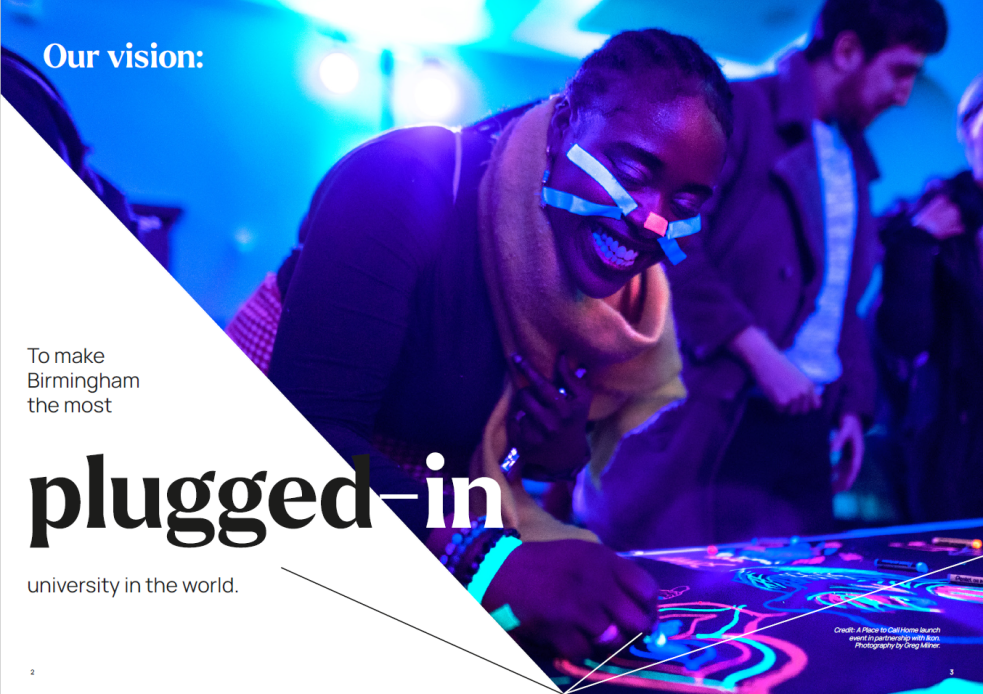Harnessing momentum from our Engage Watermark award to develop a bold new strategy.
The University of Birmingham won a gold Watermark after completing the rigorous process in 2022.
In this blog, Simon Cane, Director of Public and Cultural Engagement, shares how they used the momentum from the Watermark process and achievement, to drive forward their ambitious engagement strategy.

When I joined the University of Birmingham as Director of Public and Cultural Engagement in 2023, Lauren Deere had already done considerable work to consolidate our public and cultural engagement efforts. This culminated in our successful achievement of ‘gold’ in the NCCPE Engage Watermark. One of the key actions from that process was to develop a public engagement strategy.
My take on strategies is that everyone has them. Because universities are, to a greater or lesser degree, homogenous, it can be challenging to create a strategy that truly stands out. We wanted to harness the momentum from achieving the Gold Watermark and use it to develop a strategy that was unique—one that not only reflected our institutional-level work in this space but also served as a call to action.
A collaborative approach
The University of Birmingham is a STEM-leaning institution with excellent arts and humanities programs. That’s why we believe it’s crucial to create an inclusive Public and Cultural Engagement space that is cross-disciplinary. We were clear that our focus needed to go beyond research, encompassing education and the civic agenda as well.
I appointed a small company that I had previously worked with on the development of UCL Culture. I firmly believe that good creative consultants bring a critical eye and a voice capable of speaking truth to power in ways that can be more challenging for those working within the organisation. Undivided conducted sector research so we could assess what others were doing and integrate the best ideas into our approach.
We then embarked on a consultation process, engaging senior stakeholders through one-on-one conversations and hosting a series of workshops—first with the senior PACE team, then with the wider team. The goal was to define both the challenges and opportunities before taking the consultation further. We followed this by organising a series of three-hour workshops, inviting a diverse group of academics, professional staff, and student representatives.
Using the feedback we gathered, we refined our approach, paying close attention to language and the story we wanted to tell. We leaned into our civic roots and sought to reflect the passion and commitment expressed in the workshops. From there, we developed a ‘deck’ and gathered further input from senior stakeholders through individual meetings. This stage was particularly challenging. We wanted to use accessible language and a critical voice—one that acknowledged that, while we had made great strides in this space, there was still more we could do. It’s easy to fall into the self-affirming narrative that universities are inherently ‘great,’ but doing so ignores broader societal perceptions and the experiences of many people with no connection to a university.
Think big
After months of engagement and countless iterations, we arrived at our strapline: “To make Birmingham the most Plugged-In University in the World.” We also reached an agreement on our overall approach and language. In my experience, the biggest challenge at this stage is editing by committee, so we worked hard to preserve the clarity and originality of our approach. Excessive editing can lead to a generic, cookie-cutter strategy—one where you could simply insert the name of any university.
Alongside developing our call to action, we also needed to create a framework that brought our ideas to life, aligning them with our 2030 Strategy while making clear connections to various institutional strategies, policies, and targets (REF, TEF, NCCPE Watermark, etc.). We identified three themes common to any university PACE strategy: Student Experience, Research Engagement (originally Research Impact), and Community Engagement - so far, so expected. However, we introduced two additional themes that gave our strategy a distinctly Birmingham flavour: Campus as Destination and The New Civic.
We added an initial set of activations for each theme, but the intention is for others to contribute activations over the strategy’s lifespan. One challenge of developing an institution-wide strategy from a single department is that we cannot dictate the agenda for others. Instead, we created space for others to engage with the strategy and contribute with our support. Internally, a complex spreadsheet maps out how the themes connect to other strategies and programs, but that’s primarily for demonstrating how the strategy delivers its objectives.
Next came the design phase. I strongly believe that the way words and images are presented is critical to delivering a message effectively—something universities don’t always get right. We had to navigate the university’s new corporate branding, but through early and thorough engagement with the relevant teams, we produced a document that is ‘on brand’ yet distinctive. We also developed accessible online and downloadable versions.
Lessons learnt
Our goal was to create a strategy that would stand out in the sector, one that colleagues would be proud to share and, most importantly, a living document—not something that would sit on a shelf gathering dust, as many strategies do.
The lessons I learned along the way are: engage early, listen, have some big, original ideas. Quality does not come free so be prepared to invest in all phases of the process, take some risks, get the senior stakeholders on board, and hold your nerve.

